Common names: ertjievygie, pea mesemb, bobbejaanvingers.
The most distinct features of the genus Monilaria are the constricted stems and the persistent leaf bases which look like a string of beads (Latin monilaria = a collection of strings of pearls)
Each growing season, the plants form a short and a long leaf pair: the first pair is largely fused so that it looks like a flattish, rounded body; the second pair emerges through the tip of this body and consists of elongated leaves which are cylindrical or almost triangular in cross-section and only fused at their bases.
M. moniliformis -the most well-known species of the genus- is a shrublet to 15 cm high, with barrel-shaped internodes which make it relatively easy to recognize the plants.
In July-August the flowers appear; they are to 4 cm across and have relatively long stalks (to 5 cm) and usually white petals ( sometimes tinged yellow); the filaments are white, orange, or purple.
The species occurs in the Vredendal-Vanrhynsdorp-Klawer area of southern Namaqualand), where it grows fully exposed, mostly on clay and quartz patches. This is the southernmost part of the distribution area of the genus.
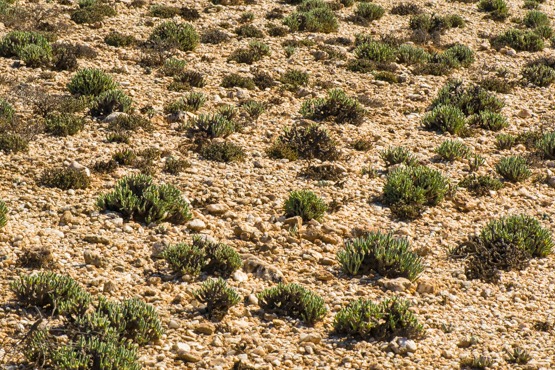

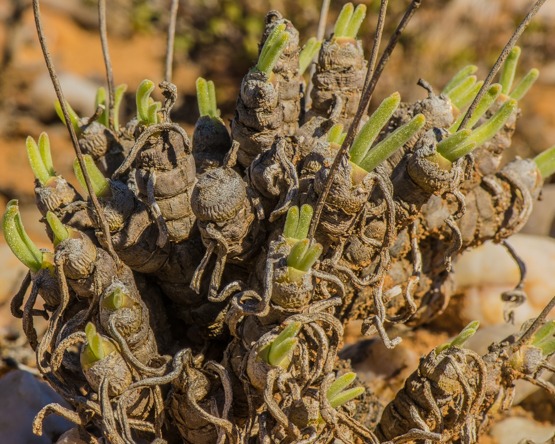
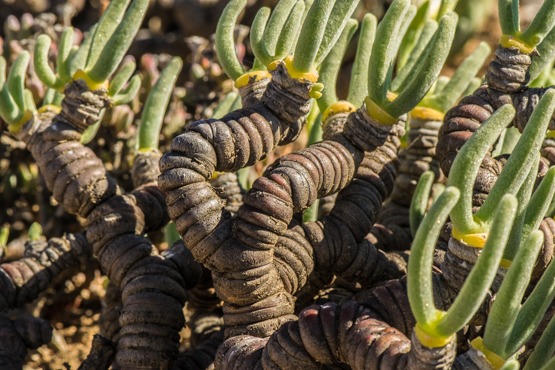

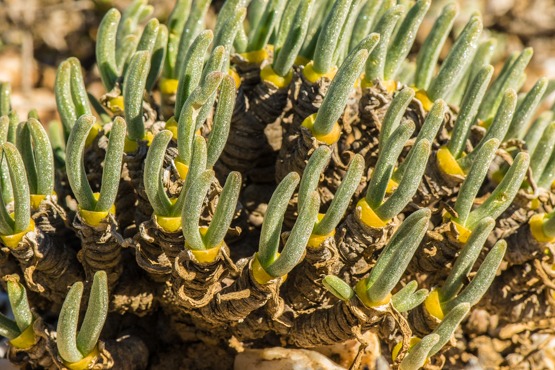
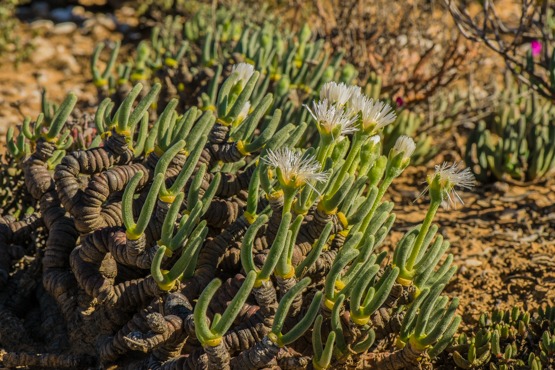
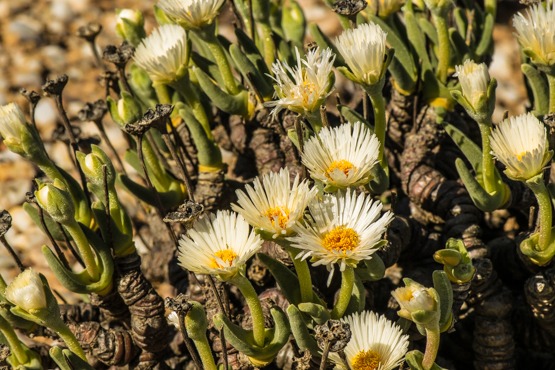
Superb photos! Interesting info.
Thanks Frans!
I’m glad you liked the post.